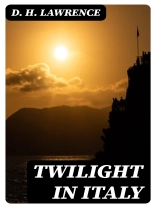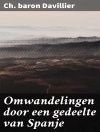In ‘Twilight in Italy, ‘ D. H. Lawrence presents a rich tapestry of impressions and reflections from his travels in Italy, blending vivid descriptions with a deeply introspective narrative. This travel memoir, published in 1912, captures the essence of Italian life and the landscape, revealing Lawrence’s fascination with the cultural and emotional textures that define the country. His literary style oscillates between poetic lyricism and candid observation, creating an evocative atmosphere that allows readers to experience Italy through his unique lens. The book serves as a crucial document in understanding Lawrence’s broader exploration of human relationships and the natural world, as it juxtaposes the chaos of modernity against the timeless beauty of Italian settings. D. H. Lawrence, a significant figure in early 20th-century literature, drew inspiration from his own experiences of travel, emotional turmoil, and his quest for artistic authenticity. Having been raised in industrial England, Lawrence’s personal rebellion against the mechanization of life fueled his desire to seek solace in nature and diverse cultures. This quest for a more profound human connection is profoundly illustrated in ‘Twilight in Italy, ‘ intertwining his observations of people with the historical and cultural influences of the region. Readers seeking both a travel narrative and a philosophical exploration of identity will find ‘Twilight in Italy’ an enriching experience. Lawrence’s acute observations and lyrical prose invite readers to reflect on their own interactions with beauty and life in a rapidly changing world. This book is essential for those interested in literary travel writing and the enduring themes of love, loss, and belonging.
เกี่ยวกับผู้แต่ง
David Herbert Lawrence, most commonly known as D. H. Lawrence, was an eminent English writer and poet. Born on September 11, 1885, in Eastwood, Nottinghamshire, he was the fourth child of Arthur John Lawrence, a coal miner, and Lydia Lawrence, a schoolteacher who imparted the love of books to Lawrence. His works are celebrated for their exploration of human emotion and nature, often delving into themes of passion, vitality, and instinct. Lawrence’s lyrical prose and vivid description set him apart as a literary figure of the early twentieth century. ‘Twilight in Italy’, one of his travel book masterpieces first published in 1916, exhibits Lawrence’s skill in depicting the synergy between the self and the setting, weaving insightful observations of the Italian landscape and its people. His notable works also include ‘Sons and Lovers’ (1913), which paralleled his early life, and ‘Lady Chatterley’s Lover’ (1928), a novel famed for its controversy due to its explicit content. Lawrence’s literary style was marked by a deep analysis of character psychology, a trait that ran through his novels, poems, essays, and travel literature. His influence on the literary world persists, as his works continue to be studied and appreciated, both for their innovative narrative style and for their challenges to the social norms of his time.












